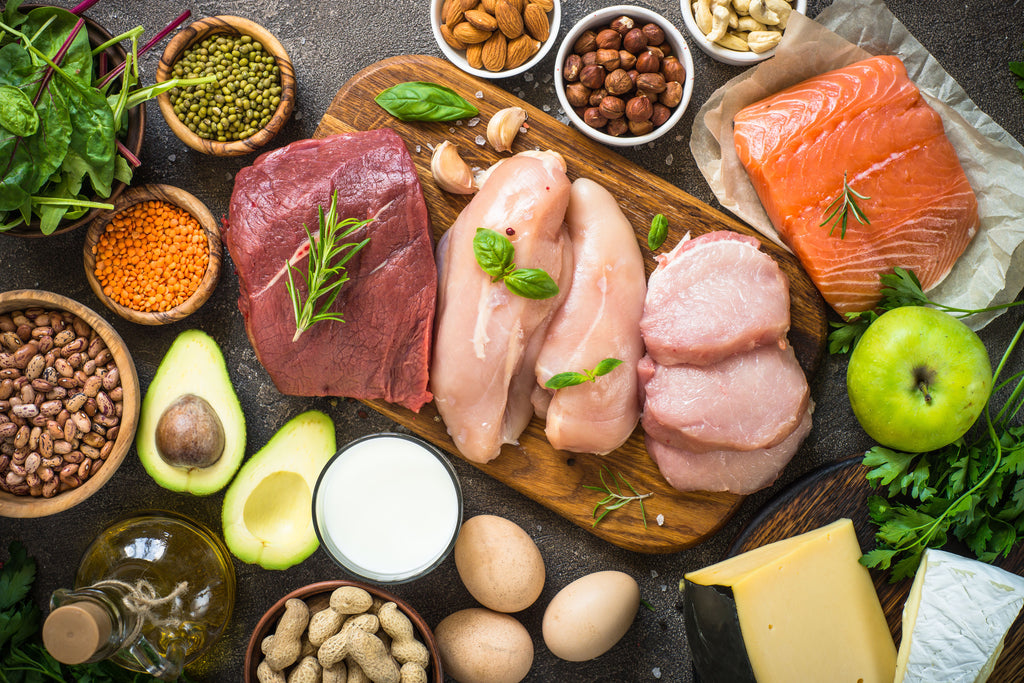By now, I think most people have heard the term "macros," but many are still unsure about what they actually are. Macros is simply the abbreviated term for macronutrients. Macronutrients are found in the foods we eat and provide our bodies with energy. They are grouped into three categories: protein, carbohydrates and fats.
What Are The 3 Types of Macros?
Protein
Protein has many important functions in the body, including maintaining and repairing muscle and tissue. They are made up of long chains of amino acids. In total, there are 20 different amino acids, nine of which we must get from the foods we eat. When all 20 are present, it is a considered a complete protein. Sources include beef, poultry, fish and dairy. (You can emphasize leaner cuts of meat or low-fat dairy depending on your goals.) While plant protein is incomplete, multiple sources can be combined to obtain all the amino acids your body needs. It is important to make smart choices.

Carbohydrates
Carbohydrates are important for brain function and of course providing our bodies with fuel, energy and fiber. Not all carbohydrates are created equal, however. Simple carbohydrates are broken down and absorbed quickly. They are often low in nutrients, low in fiber and high in calories. Sources include soda, candy and pastries. Complex carbohydrates, on the other hand, are broken down and absorbed more slowly and provide sustained energy. Sources include legumes, whole grains, and vegetables. These are the types of carbohydrates that should be the staple sources in our nutrition plans.
Dietary Fats
Dietary fats are an excellent source of energy and are essential to absorb certain vitamins, as well as for hormone production. There are four types of fats: trans, saturated, monounsaturated and polyunsaturated. Trans fats and saturated fats are more solid at room temperature and can raise LDL (bad cholesterol). These types of fats should be limited in our diets. Monounsaturated and polyunsaturated fats are more liquid at room temperature and can help to lower these bad cholesterol levels. Olive oil, salmon, avocados and walnuts are all examples of healthy dietary fasts we should incorporate into our diets the majority of the time.
Many fitness enthusiasts — like myself — calculate our macros to ensure we are hitting our target numbers. It's fast and easy to do with your food prep and requires only a digital food scale.
Related Articles
How Do I Figure Out My Macros?
Each gram of protein provides four calories. Each gram of carbohydrates provides four calories and each gram of fat provides nine calories. How many macros you need will depend on factors including your training regimen, body weight and goals. There is no cookie cutter answer. And, if you're wondering how to calculate macros for weight loss, you should consult with a nutritionist or doctor.
If you're unsure how to design a plan, I recommend hiring a nutritionist to help get you started. Once you have your food plan designed, all you will need to do is weigh your food.
- For example, if my plan outlines me eating 30g of carbohydrates for my first meal and I'm having oats that day, I'll simply read the label and weigh my food to ensure that's what I’m getting. If the label states that 40g of oats will give me 30g of carbohydrates for example, I would weigh out 40g on my food scale.
Some plans will go a step further and list the sources per meal with the amount to be weighed. These are great for beginners and require no math or thinking. You would only be required to weigh the amount listed in your plan.
We also recommend discussing your health goals with your licensed healthcare professional. They can best provide you with the diagnosis and treatment of any medical condition and assist you as well in deciding whether a dietary supplement will be a helpful addition to your regimen.













